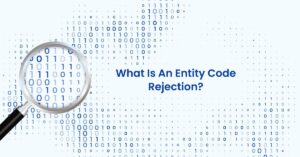When it comes to understanding medical bills, the details matter. Getting things right means the difference between smooth payments and financial nuisances.
The three essential codes help to make things clear: modifiers 59, 25, and 91. They act like translators, ensuring physician services are clear to insurance companies. By doing this, they confirm they understand everything and that the physicians get paid correctly.
These modifiers can help to ensure that medical bills are accurate and that physicians are paid correctly.
But why do these specific modifiers matter so much? And how do they function in the medical bill submission? Before this, you need to understand what modifiers in medical billing are.
Modifiers in medical coding are like precision and transparency tools. They add essential details to the main codes describing a physician’s services, ensuring that the precise nature of the treatment is captured. By using modifiers, healthcare providers can better depict a patient’s visit, ensuring they receive the proper reimbursement for their services.
Modifier 59
Modifier 59 is more than just an add-on code. It’s a way to signal that a physician provided multiple services in one session, but they are distinct and independent of each other. It indicates that the services are not overlapping but necessary in their own right.
How does it work?
When billing for medical services, primary procedure codes define the main services. If additional procedures or services aren’t typically paired with the primary service, Modifier 59 is appended to the other service’s code. That tells the insurance company that the service is not part of the primary service.
Working cycle
Here’s a concise working cycle for using Modifier 59 in medical billing:
Bill Primary Service. Begin with the primary procedure code for the main service.
Identify Additional Services. Detect any procedures or services not typically linked with the primary one.
Append Modifier 59. Attach Modifier 59 to the additional service’s code.
Notify Insurance. This signals the insurer that the additional service is distinct and not part of the primary service.
When to use
- When the same physician or other qualified healthcare professional performs a procedure or service subsequent to a related procedure or service on the same day.
- When the subsequent procedure or service is unrelated to the first procedure or service but is performed during the same session.
When not to use
- When the subsequent procedure or service is planned and part of the global surgical package for the first procedure or service.
- When a different physician or other qualified healthcare professional performs the subsequent procedure or service.
- When the subsequent procedure or service is performed on a different day than the first procedure or service.
Practical examples
➜ Suppose a patient comes in with a deep cut on the arm and, after addressing the wound, also asks for a separate unrelated mole removal. Both procedures are done in the same session. Modifier 59 would indicate that the mole removal was an independent service.
➜ A patient visits an orthopedic surgeon for knee and shoulder pain. The physician vaccinates injections in both areas during the same visit. Though injections are given in one session, each is a separate service. Modifier 59 can be attached to the additional procedure code to highlight its distinct nature.
Common mistakes and misconceptions
One of the frequent misconceptions is that Modifier 59 is a “universal” modifier that can be added whenever there’s more than one service. This isn’t true; its specific use is for distinct procedural services.
Another mistake is using Modifier 59 for services that are typically bundled together. For example, if a patient gets a consultation during a single visit and then a standard follow-up procedure is typically done post-consultation, Modifier 59 wouldn’t be appropriate.
Do you know? 💡
Cigna’s modifier 25 policy burdens doctors and deters prompt care.
Cigna delayed the implementation of its policy to require the submission of office notes for claims with modifier 25. The AMA , other physician and healthcare professional organizations are urging Cigna to rescind the policy, citing its negative impact on practice administrative costs and burdens and its potential negative effect on patients.

Modifier 25
The same physician uses modifier 25 to describe a scenario where a patient receives a significant, separately identifiable evaluation and management (E&M) service on the same day as another service or procedure. It tells the insurance that even though two services occurred on the same day, they are unrelated and deserve separate reimbursement.
How does it work?
When a patient has a scheduled procedure and then needs an additional unrelated E&M service, Modifier 25 is added to the E&M service code. This signals the insurance company that the consultation was separate from the primary procedure.
Working cycle
Here’s a concise working cycle for using Modifier 25 in medical billing:
Begin with the Scheduled Procedure. Start by billing the primary procedure code.
Identify Unrelated E&M Service. Recognize any additional Evaluation and Management (E&M) services separate from the primary procedure.
Append Modifier 25. Attach Modifier 25 to the E&M service code.
Notify Insurance. This informs the insurer that the E&M service was distinct and not bundled with the primary procedure.
When to use
- When a physician provides a significant and separately identifiable evaluation and management (E/M) service on the same day as a major surgery.
- When a patient is admitted to the hospital for observation, a physician provides a significant and separately identifiable E/M service on the day of admission.
- When a patient is seen in the emergency department and a physician provides a significant and separately identifiable E/M service on the same day as the emergency department visit.
When not to use
- When the E/M service is part of the global surgical package for the major surgery.
- When a non-physician provider (NPP) provides the E/M service.
- When the E/M service is provided during a pre-operative or post-operative period.
Practical examples
➜ Imagine a patient scheduled for a minor surgical procedure that shows unrelated symptoms like a high fever. The doctor conducts a full evaluation (E&M service) before the surgery. Modifier 25 would be applied to the evaluation code.
➜ A patient mentions severe allergies during a regular check-up (an E&M service). The doctor then performs an allergy test on the same day. Since the test and check-up are distinct, Modifier 25 is added to the check-up code.
Common mistakes and misconceptions
Many think Modifier 25 is used whenever an E&M service and another procedure are performed on the same day. But it’s only for unrelated E&M services. For instance, using it for a routine post-procedure follow-up would be inappropriate.
Consequences of using incorrect Modifier
Do you know that improper medical billing modifiers can lead to significant consequences in the healthcare industry?
Mistake
Applying the “final” modifier to codes or procedures without a genuine need for its implications.
Consequence
Overusing the “final” modifier can lead to confusion, hinder proper claim processing, and potentially result in delayed or denied reimbursements.
Reserve the “final” modifier for scenarios where its implications are necessary to represent the provided service or procedure accurately. Avoid adding the modifier to codes or procedures that don’t require specific restrictions. Doing so ensures that the billing process remains adaptable and responsive to changes in medical practices, regulations, and insurance requirements.
At Bell MedEx, our expert medical coders excel in appropriately utilizing modifiers, ensuring streamlined billing, accurate claims, and optimized revenue cycle management.

Modifier 91
Modifier 91 is about lab tests. Specifically, it indicates that a test was performed more than once on the same day for the same patient, but it wasn’t just a repeat. It was necessary to obtain subsequent follow-up on test results.
How does it work?
When a patient needs the same lab test done multiple times on the same day to track changes (like blood glucose levels), Modifier 91 is added to the lab test code for the additional tests, signaling that these aren’t just repeated tests but essential follow-ups.
Working cycle
Initial Lab Test. Bill the primary lab test code for the first instance.
Identify Multiple Tests Requirement. Recognize the need for the same lab test to be done multiple times in a day.
Append Modifier 91. Attach Modifier 91 to the lab test code for each subsequent test.
Notify Insurance. This informs the insurer that these are essential follow-up tests, not mere repetitions.
When to use
- Use modifier 91 to manage the patient’s treatment if you repeat a clinical laboratory test on the same service date.
- Use modifier 91 if you need multiple, serial laboratory tests to treat a patient, such as repeat blood glucose tests.
- Use modifier 91 if you repeat a test using a separate specimen draw later the same day.
When not to use
- Do not use modifier 91 if you repeat a test to verify results due to equipment failure or specimen inadequacy.
- Do not use modifier 91 if you repeat a test to obtain a different result, such as an additional drug level.
- Do not use modifier 91 if you repeat a test as part of a screening program.
Practical examples
➜ In a hospital setting, medical staff may conduct blood glucose tests for a diabetic patient during the morning, afternoon, and evening to closely monitor and regulate insulin levels. Modifier 91 is utilized with the afternoon and evening tests to indicate that the later tests are follow-ups.
➜ When a patient undergoes a blood transfusion, healthcare providers may find it necessary to perform multiple blood tests throughout the day to ensure the compatibility and safety of the transfusion. In this scenario, the extra tests would be billed with the application of Modifier 91.
Common mistakes and misconceptions
The main confusion comes from differentiating between repeated tests due to errors or quality issues (which shouldn’t use Modifier 91) and subsequent necessary tests. Using Modifier 91 for a mere repeat of a botched test, rather than a medically necessary subsequent test, would be incorrect.
Quick Comparison of Modifiers 59, 25 and 91
| Aspect | Modifier 59 | Modifier 25 | Modifier 91 |
| Purpose | Used for distinct procedural services. | Indicates a separate identifiable E&M service by the same physician on the same day. | Represents repeated lab tests performed on the same day. |
| Application | Applied when multiple services are performed during a single session but aren’t related. | Used when an additional E&M service is provided on the same day as another procedure or service. | Used for lab tests that are repeated on the same day to obtain follow-up results, not due to errors or reruns. |
| Billing Impact | Helps prevent under-billing or claim denials for separate services in one session. | Ensures that the extra E&M service given on the same day as another procedure is billed appropriately. | Ensures that repeated tests are billed accurately without causing confusion or implying an error in initial testing. |
| Common Misuse | Sometimes wrongly used just to get a procedure paid without considering whether the procedures were distinct. | Mistakenly added to claims when there isn’t a significant, separately identifiable E&M service beyond the other procedure performed. | Incorrectly used to bill for repeated tests due to initial errors. |
This table efficiently summarizes the purpose, application, billing impact, and common misuse of modifiers 59, 25, and 91. It’s vital for professionals in medical billing to understand these nuances to ensure correct billing and reimbursement.
FAQs
Are modifiers 25 and 59 interchangeable?
The interchangeable use of modifiers 25 and 59 isn’t viable. Their coding mechanisms differentiate services on the same day distinctly. Proper application is crucial to prevent claim discrepancies.
What is the difference between 91 and 59 modifiers?
Modifier 91 indicates repeated clinical lab tests on the same day for treatment management. Modifier 59 designates separate procedures performed by the same healthcare professional on the same day.




